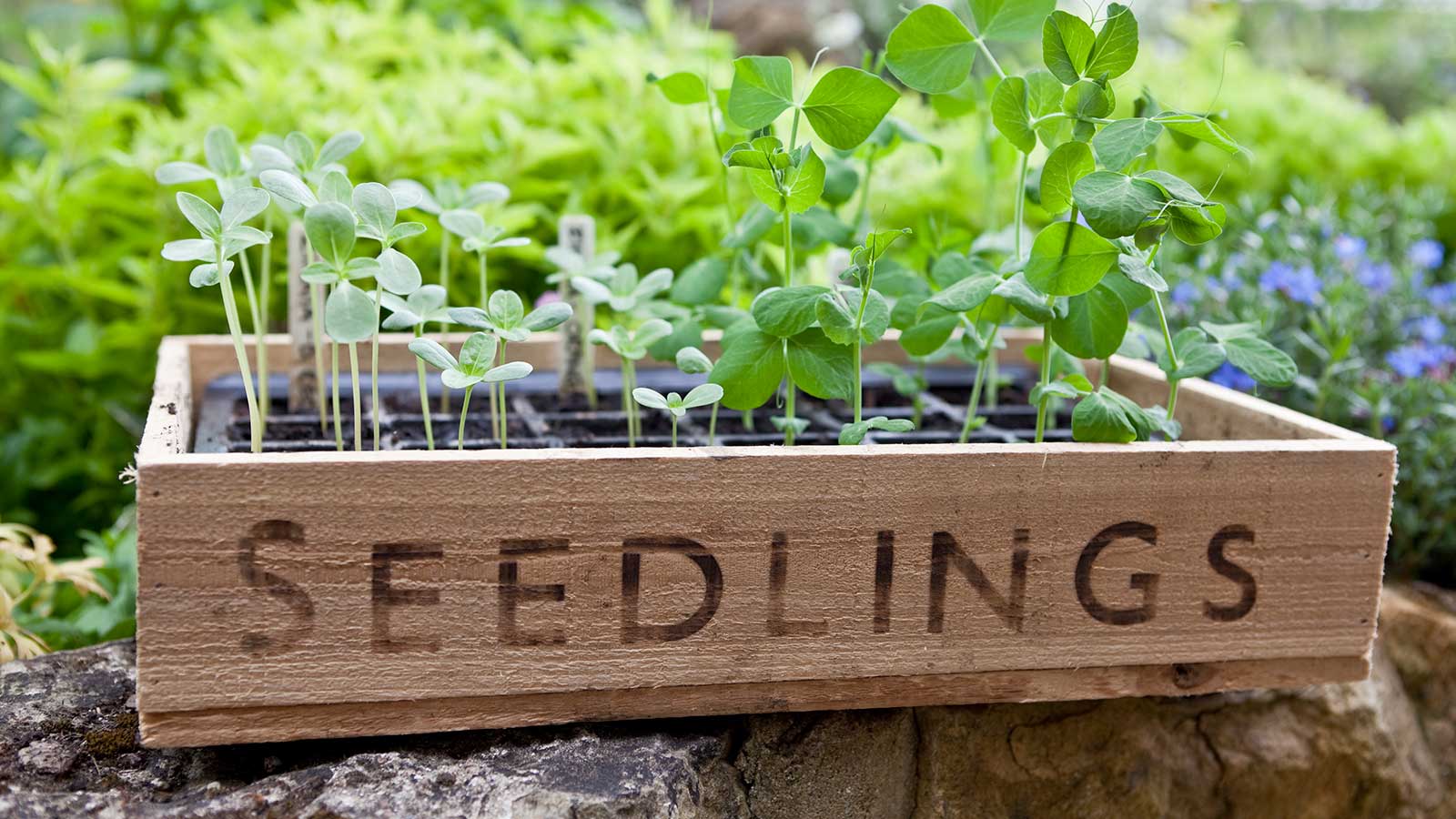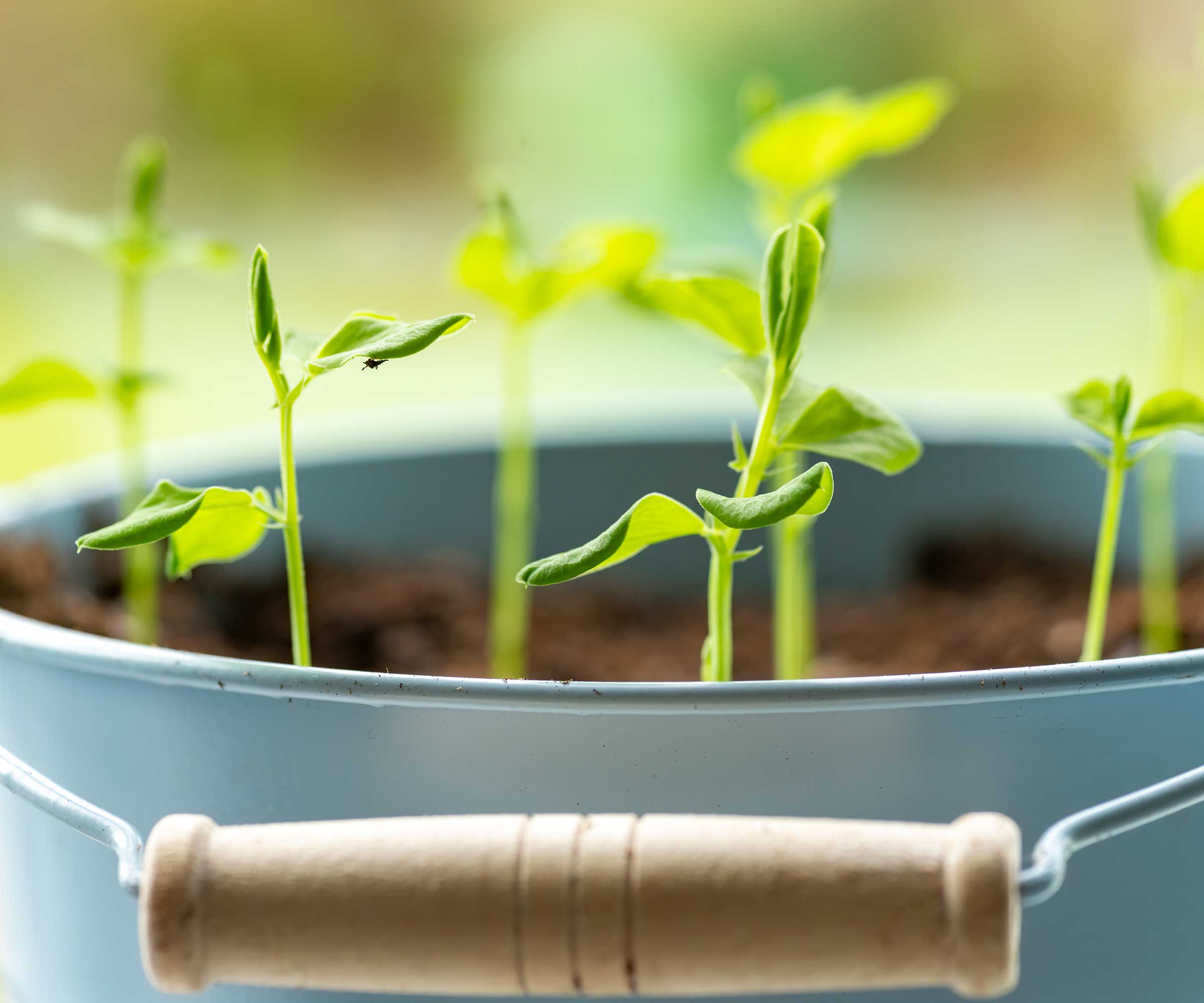4 common problems with sweet pea seedlings – and the simple solutions, approved by gardening experts
Keep your sweet pea seedlings healthy and trouble-free with this advice


Growing sweet peas from seed is rewarding and relatively straightforward, but as with most things, problems can sometimes arise.
These range from leggy, weak growth to interloping pests, and such issues early on can affect the plants in the long term. So, to grow the robust and prolific bloomers you envisioned, these sweet pea seedling problems need to be solved quickly.
It's no need to worry – there are always solutions to try. Plus, you can see it as a useful learning curve for future sweet pea growing endeavors, so you can prevent the problems from happening again.

Sweet peas are a summer favorite for their pretty flowers and gorgeous scent
4 issues with sweet pea seedlings and what to do about them
With a bit of determination and these expert tips, you'll still have fragrant flowers to enjoy come summer.
1. Tangled and leggy sweet pea seedlings
Leggy seedlings are usually caused by two things: too little, or one-sided light (often the case when grown on window sills), and too much heat.
'The best way to rescue them is to move them to a cooler spot in good light,' says John Negus, a gardening expert of Homes & Gardens. 'Then, using scissors, shorten shoots to within two pairs of leaves from the base.' Removing the tips in this way will trigger the development of much stronger basal shoots.
'Gradually harden-off plants by positioning them outdoors in a sheltered spot during the day, bringing them in at night. Alternatively, leave them outdoors and cover them with cloches,' John continues.
Design expertise in your inbox – from inspiring decorating ideas and beautiful celebrity homes to practical gardening advice and shopping round-ups.
When nights are warmer, transplant youngsters 6in apart, he recommends. Support them with netting or pea sticks and feed them with a high-potash tomato fertilizer to encourage strong new growth and blooms.

John has been a garden journalist for over 50 years and regularly answers readers' questions in Amateur Gardening magazine. He has also written four books and has delivered many talks over the years on horticulture.

Harden seedlings off before planting them in their final position
2. Rotting sweet pea seeds
Wet and airless compost can result in sweet pea seeds rotting. It's best to discard them and sow a fresh batch.
'When you do, add a quarter part of coarse grit, by volume, to the seed compost,' says John. 'If you are using pots or seed trays, set seeds 1/2in deep and 4in apart.'
The compost you plant them in should be damp. Only water the seeds when they have sprouted, and then continue to do so whenever the soil looks dry, avoiding waterlogging.
'Alternatively, line a seed tray with three layers of kitchen roll and soak it with water,' John says. 'Sow seeds 4in apart and cover the tray with plastic film. Position it in good light on a warm, sunny windowsill or close to a boiler. When seeds germinate and roots are visible, very carefully transfer plants to pots or seed trays of seed compost.'
If it's late in the sweet-pea sowing season (generally in May), you can plant your fresh seeds directly outdoors.

With the right care, sweet peas will reward you with prolific flowers
3. Sweet pea seedlings sown too close together
If you've sown your sweet pea seedlings too close together in a pot indoors, John says it's best to transplant the entire clump when you plant them out. This will prevent disturbing the long, individual plant roots, which they notoriously hate (this is why many gardeners grow them in root trainers, such as these Tierra Garden ones from Amazon).
To give them a helping hand before you do this, pinch out the tips, ensure they have plenty of good light, and feed them twice a week with a liquid high-potash tomato fertilizer, says John. 'Ideally, after transplanting, fan-train your charges on netting or trellis or support them with twiggy sticks.'

Sweet pea seedlings don't like their roots to be disturbed
4. Slugs attacking sweet pea seedlings
After going to the trouble of raising sweet pea seedlings and transplanting them outdoors, the last thing you want is to see them devoured by slugs and snails. These garden pests love the soft, leafy growth, but luckily there are a few ways you can deter them.
'Try setting beer traps to catch them, or surrounding the young plants with a barrier of gravel, crushed eggshells, or wool pellets,' suggests Drew Swainston, a gardening expert from Homes & Gardens. 'Beneficial nematodes are another natural way to get rid of them.'

Drew is a former professional gardener who also specialized as a grower of vegetables, fruit, and herbs. He worked in several walled gardens and grew edibles for chefs, and to sell to the public.
Bear these tips in mind and you'll be able to increase the chances of success with your sweet pea seeds and seedlings. And if your seedlings are beyond salvaging, and there's no time to sow more, plug plants bought from garden centers are a reliable and generally inexpensive backup plan.
Either way, before long, you'll be able to admire the beautiful summer blooms in your garden. They're perfect for bringing indoors and brightening the home, too, especially as the more you pick, the more will grow.

Holly started writing about gardening five years ago, and she is a regular contributor to Homes & Gardens. She has also written many gardening features for Woman & Home and Real Homes, too. She has previous experience as a professional gardener, where she helped to plant and maintain private gardens. Holly has also looked after allotment plots over the years and loves to grow her own flowers and veggies from seed. In her spare time, she enjoys visiting local gardens, botanical drawing, and tending to her ever-growing collection of houseplants.